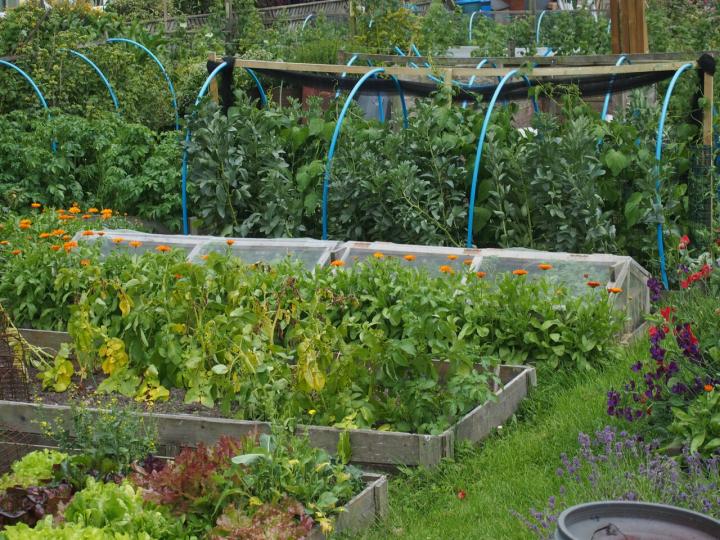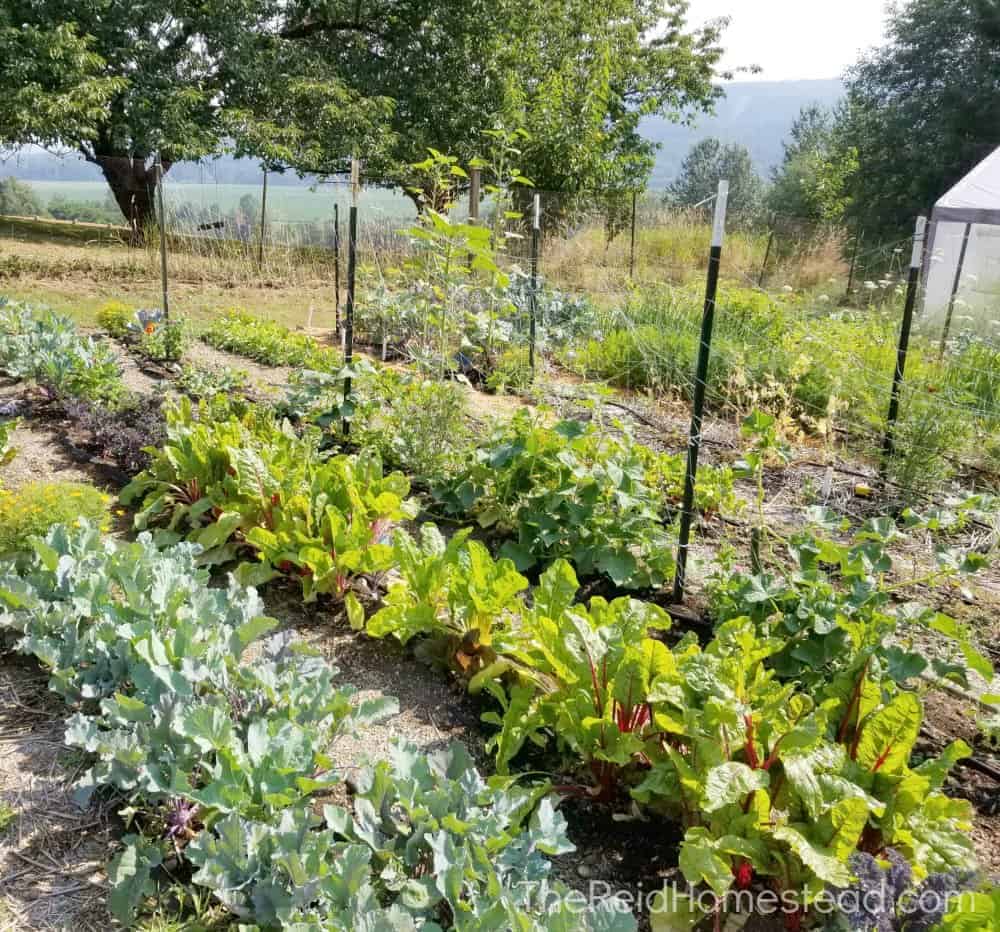Essential Care Strategies for Homestead Gardening
Essential Care Strategies for Homestead Gardening
Blog Article
Discover Necessary Tips for Successful Gardening Techniques and Practices
Horticulture, often seen as a simple activity, includes a variety of methods and techniques that can dramatically influence the result of your initiatives. By focusing on crucial components such as dirt wellness, efficient watering approaches, and appropriate plant choice, gardeners can develop a successful community that supports dynamic growth. Recognizing the subtleties of insect administration and seasonal upkeep can even more improve performance. Yet, several enthusiasts ignore essential details that can make or break their gardening success-- discovering these overlooked aspects may reveal the secret to growing a flourishing garden.
Comprehending Soil Health And Wellness
Soil health and wellness is a fundamental facet of successful horticulture, as it directly influences plant development, nutrition schedule, and community equilibrium. Healthy soil is identified by a rich biodiversity of bacteria, organic matter, and a well balanced pH level, which together develop a setting helpful to plant development.
To comprehend dirt health and wellness, one must consider its physical, chemical, and organic homes. The appearance and structure of dirt impact its capacity to preserve dampness and nutrients, while the chemical make-up determines the schedule of important elements like nitrogen, potassium, and phosphorus. Routine dirt screening is essential to examine these variables, allowing gardeners to make informed decisions relating to modifications and plant foods.
Furthermore, promoting biological activity within the soil is crucial for preserving its wellness. Practices such as composting, plant turning, and making use of cover plants can improve microbial variety, enhance nutrient cycling, and minimize soil erosion. By prioritizing soil health and wellness, gardeners not only enhance plant growth but also add to a sustainable ecosystem, guaranteeing that their gardening practices are environmentally responsible and resistant gradually.
Efficient Watering Techniques
Ensuring that plants obtain the ideal quantity of water is crucial for their health and wellness and growth, particularly when paired with a strong foundation of soil wellness (Homestead Gardening). Efficient watering techniques can significantly influence plant vitality, decreasing water wastage and advertising ideal development
One basic technique is deep watering, which encourages origins to grow much deeper into the dirt, enhancing dry spell resistance. This technique normally includes sprinkling less regularly but in bigger quantities, enabling moisture to permeate the origin zone extensively. Timing is also critical; early morning is the excellent time to water, as it reduces dissipation and allows vegetation to completely dry during the day, minimizing disease dangers.
In addition, employing mulch can aid retain dirt dampness and regulate temperature, more aiding effective sprinkling techniques. Utilizing a drip irrigation system can additionally provide targeted wetness straight to the origins, ensuring that water reaches where it's most needed while preserving sources.
Keeping track of rains and dirt wetness degrees can guide modifications in your watering schedule, making sure plants obtain regular hydration without over-saturation. By adopting these effective watering strategies, garden enthusiasts can promote a growing setting for their plants to grow.
Plant Choice and Positioning
How can the appropriate plant selection and tactical placement transform a garden into a growing ecological community? The harmony in between plant selections and their positioning is crucial for creating a dynamic garden. When selecting plants, consider factors such as climate, dirt kind, and sunshine direct exposure. Indigenous types are typically the very best choice as they are adapted to local problems and call for much less maintenance.
Strategic placement entails preparing plants according to their development practices and needs. Taller plants need to be placed at the back of boundaries to avoid shading shorter plants. In addition, organizing plants with similar water and light needs can improve their growth and reduce competitors for resources.
Including a variety of plants not only includes aesthetic appeal yet likewise promotes biodiversity, bring in helpful insects and pollinators. Take into consideration the seasonal modifications in your garden; pick a mix of annuals, perennials, and evergreens to ensure year-round rate of interest.
Lastly, bear in mind to evaluate the mature dimension of plants prior to planting to stay clear of congestion and ensure appropriate air circulation. Thoughtful plant choice and strategic positioning create an unified environment, enabling your yard to thrive while decreasing difficulties.
Parasite and Illness Monitoring
Effective bug and disease administration is essential for preserving a healthy and balanced yard community - Homestead Gardening. An aggressive approach, integrating cultural, biological, and chemical approaches, can considerably lower the impact of insects and illness on your plants

Biological controls, such as introducing useful pests like ladybugs or predacious termites, can maintain parasite populaces in check without damaging the setting. In addition, keeping plant wellness via correct watering, fertilizing, and trimming will reinforce their durability against diseases.
When intervention is necessary, select targeted chemical therapies, making certain to adhere to application standards to lessen damage to non-target organisms. Always focus on lasting techniques, as they advertise long-lasting garden wellness and eco-friendly equilibrium. By integrating these strategies, garden enthusiasts can properly handle bugs and diseases, making sure prospering plants and a productive yard.

Seasonal Upkeep Practices
Throughout each period, carrying out targeted maintenance practices is important source essential for optimizing yard health and wellness and efficiency. In spring, emphasis on dirt preparation by screening pH degrees and adding necessary modifications. This is likewise the optimal time to apply plant foods and mulch to retain dampness and reduce weeds. Routinely inspect arising plants for illness and pests.
As summertime approaches, make sure adequate watering while keeping an eye on for signs of anxiety or condition. Prune back disordered plants to encourage air blood circulation and reduce moisture around vegetation. This practice not just boosts plant health however also promotes blooming and fruiting.
With the arrival of fall, it's time to prepare for wintertime. Clean up fallen leaves and debris to stop insect invasions, and take into consideration planting cover crops to improve dirt health. This season is additionally ideal for splitting perennials and growing spring-flowering light bulbs.
Verdict
Effective gardening hinges on the integration of sound techniques in dirt wellness, watering, plant choice, insect management, and seasonal upkeep. By prioritizing dirt testing and microbial diversity, utilizing effective sprinkling techniques, and picking proper plants, gardeners can create thriving environments.
By focusing on necessary aspects such as dirt health and wellness, effective watering strategies, and proper plant selection, garden enthusiasts can develop a flourishing environment that supports vibrant development. By prioritizing soil health, garden enthusiasts not just optimize plant growth but additionally add to a lasting community, ensuring that their horticulture methods are environmentally Home Page liable and his comment is here resilient over time.
Taller plants ought to be placed at the back of borders to protect against shading much shorter plants. Clean up dropped leaves and debris to stop pest invasions, and consider growing cover plants to enrich dirt health.Effective gardening hinges on the assimilation of sound techniques in soil health and wellness, watering, plant option, insect monitoring, and seasonal maintenance.
Report this page